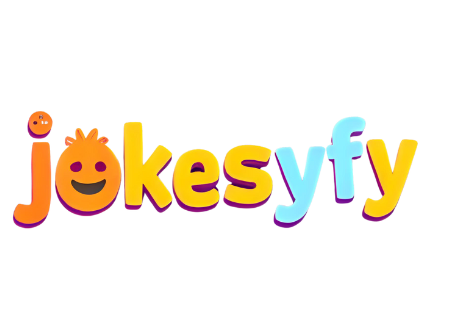Jokes in Spanish offer one of the most entertaining pathways to understanding the heart and soul of Spanish-speaking cultures. Whether you’re a language learner seeking to improve your skills or someone who wants to connect with Spanish-speaking friends and colleagues, understanding Spanish humor provides a gateway to genuine cultural immersion. This comprehensive guide delivers the ultimate collection of funny Spanish jokes that will have you laughing while learning the nuances of the language. From clever wordplay to cultural observations, these jokes will help you understand what makes Spanish speakers laugh while expanding your vocabulary and cultural knowledge. Get ready to explore the wonderful world of Spanish comedy that goes beyond mere translation to capture the authentic spirit of humor across the Spanish-speaking world!
Understanding Spanish Joke Culture 🎭
Spanish humor has developed through centuries of cultural influences, creating a unique comedic tradition that varies across different Spanish-speaking countries. Thanks to influences from the Romans, Moors, and indigenous Latin American cultures, Spanish humor has evolved into something uniquely vibrant and layered. From Cervantes’ classic Don Quijote de la Mancha, which used irony and absurdity to poke fun at society way back in the 1600s, to modern memes and social media humor, Spanish comedy maintains its distinctive character across generations. Understanding these cultural foundations will help you appreciate the jokes in this collection on a deeper level and connect more authentically with Spanish speakers.
Several key characteristics define Spanish joke-telling traditions that you’ll notice throughout this article. Spanish humor thrives on clever wordplay and puns known as “juegos de palabras,” where phonetic similarities between words lead to witty misunderstandings and unexpected punchlines. Irony and sarcasm are also common elements, though they’re often delivered with subtlety that requires understanding context and delivery. Additionally, many jokes reflect local culture, politics, or history, serving as social commentary while entertaining audiences. This rich cultural foundation makes learning Spanish jokes about more than just laughter—it’s about understanding perspective and worldview.
Key Elements of Spanish Humor:
- Wordplay Priority: Puns and double meanings form the foundation of most classic Spanish jokes
- Cultural Context: Many jokes reference historical figures, cultural traditions, or social observations
- Regional Variations: Humor differs significantly between Spain, Mexico, Argentina, and other Spanish-speaking regions
- Social Commentary: Even simple jokes often contain subtle observations about society and human behavior
Basic Spanish Joke Vocabulary 📚
Before diving into the jokes themselves, it’s helpful to understand the basic vocabulary related to joking and humor in Spanish. The most common word for joke is “chiste” (chees-teh), which refers to traditional jokes with setup and punchline structures. Another essential term is “broma” (broh-ma), which typically describes pranks or playful teasing rather than verbal jokes. Knowing these terms will help you navigate Spanish comedy and understand what kind of humor you’re encountering in different situations.
The vocabulary around Spanish humor extends beyond these basic terms, offering nuanced ways to discuss comedy and joking. A person who loves making jokes might be called a “bromista” (joker or prankster), while something funny could be described as “gracioso” or “chistoso.” For more sophisticated humor, you might encounter “chascarrillo” (a witty quip) or “sarcasmo” (sarcasm). Understanding these terms enhances both your comprehension of jokes and your ability to discuss humor in Spanish.
Essential Spanish Humor Vocabulary:
| Spanish Term | English Translation | Usage Context |
| Chiste | Joke | Formal term for jokes with punchlines |
| Broma | Prank/Joke | Practical jokes or light teasing |
| Bromista | Joker/Prankster | Someone who loves making jokes |
| Gracioso | Funny | General term for something humorous |
| Chistoso | Funny | More informal description of humor |
| Burla | Mockery | Sarcastic or mocking humor |
| Chascarrillo | Quip | Witty or humorous remark |
| Sarcasmo | Sarcasm | Ironic or mocking humor style |
Short & Simple Spanish Jokes for Beginners 🎯
If you’re new to Spanish, starting with simple, short jokes helps you build confidence while learning essential vocabulary. These easy Spanish jokes often rely on basic wordplay and simple structures that are accessible even at beginner levels. The beauty of these jokes lies in their simplicity—they deliver quick laughs while reinforcing fundamental language concepts. Many of these function as excellent icebreakers or conversation starters with native Spanish speakers who appreciate the effort to engage with their culture and language.
One of the most charming aspects of beginner-level Spanish jokes is the use of rhyming phrases that play with sounds and meanings. For example, the playful exchange “¿Qué te pasa, calabaza?” (What’s up, pumpkin?) often receives the response “Nada, nada, limonada” (Nothing, nothing, lemonade). These rhythmic exchanges showcase the musicality of Spanish while creating memorable learning moments. Similarly, dismissive rhymes like “Obvio, microbio” (Obviously, microbe) and “Me canso, ganso” (I’m tired, goose) demonstrate how Spanish speakers play with language in daily conversations.
Top Beginner-Friendly Jokes:
- “¿Qué le dice una piedra a otra? ¡La vida es dura!” – What does one rock say to another? Life is hard! (pun on “dura” meaning both hard and difficult)
- “¿Cómo se queda un mago después de comer? Magordito.” – What happens to a magician after eating? He gets a little chubby. (wordplay with “mago” and “gordito”)
- “Chao, chao, bacalao.” – Bye bye, codfish. (playful rhyming farewell)
- “Eso, eso, pan con queso.” – That’s right, bread with cheese. (humorous agreement rhyme)
- “¿Qué le dice un techo a otro? Techo de menos.” – What does one roof say to another? I miss you. (pun on “techo de menos” sounding like “te echo de menos” meaning “I miss you”)
Animal Jokes in Spanish 🐾
Animal jokes represent a universal form of humor that transcends cultural boundaries, and Spanish comedy has its own delightful variations on this classic theme. These funny Spanish animal jokes often feature clever wordplay involving animal names, characteristics, or behaviors that create unexpected punchlines. From bees doing Zumba classes to seals looking for lightbulbs, the animal kingdom provides endless inspiration for Spanish comedians and joke-tellers. These jokes are particularly effective for language learners since the vocabulary tends to be familiar while the concepts remain entertaining across language barriers.
Many Spanish animal jokes use puns that work specifically within the Spanish language, making them excellent examples of untranslatable humor. For instance, the joke “¿Qué hace una abeja en el gimnasio? ¡Zum-ba!” works because “zumba” sounds like the buzzing noise bees make (“zumbido”) while also referring to the popular dance fitness program. Similarly, “¿Por qué las focas miran siempre hacia arriba? Porque ahí están los focos” creates humor through the similarity between “foca” (seal) and “foco” (lightbulb). Understanding these linguistic connections deepens your appreciation for how Spanish humor operates.
Hilarious Animal Jokes:
- “¿Qué hace una abeja en el gimnasio? ¡Zum-ba!” – What does a bee do in the gym? Zumba!
- “¿Por qué las focas miran siempre hacia arriba? Porque ahí están los focos.” – Why do seals always look up? Because that’s where the lights are.
- “¿Cómo se llama el pez más divertido? El pez-payasito.” – What’s the funniest fish called? The clownfish.
- “¿Qué le dice una iguana a su hermana gemela? Somos iguanitas.” – What does one iguana say to her twin sister? We’re little iguanas.
- “¿Por qué los pájaros no usan Facebook? Porque ya tienen Twitter.” – Why don’t birds use Facebook? Because they already have Twitter.
Food & Drink Themed Jokes 🍕
Food represents an essential aspect of Spanish-speaking cultures, so it’s no surprise that comedic material around eating and drinking abounds in Spanish humor. These Spanish food jokes often play with ingredient names, cooking processes, or cultural associations with different foods. From coffee attending school to become stronger to questions about whether tomatoes should be considered fruits, the culinary world provides rich material for Spanish joke creators. These jokes often work particularly well because they combine universal experiences with language-specific wordplay that highlights the cultural importance of food.
Coffee culture runs deep throughout Spanish-speaking countries, making it a frequent subject of humor. The joke “¿Por qué el café fue a la escuela? Porque quería ser más fuerte” plays with the double meaning of “fuerte” as both strong flavor and physical strength. Similarly, “¿Cuál es el café más peligroso del mundo? El ex-preso” creates a pun between “expreso” (espresso) and “ex-preso” (ex-convict). These jokes demonstrate how everyday elements like coffee become vehicles for clever wordplay in Spanish comedy, blending familiar experiences with linguistic creativity.
Delicious Food Jokes:
- “¿Por qué el café fue a la escuela? Porque quería ser más fuerte.” – Why did the coffee go to school? Because it wanted to be stronger.
- “¿Cuál es el café más peligroso del mundo? El ex-preso.” – What’s the most dangerous coffee in the world? The ex-press.
- “Si el coco tiene pelo y leche, ¿por qué no se le considera un mamífero?” – If coconuts have hair and milk, why aren’t they considered mammals?
- “Si las pizzas son redondas, ¿por qué van en cajas cuadradas?” – If pizzas are round, why do they come in square boxes?
- “Si un tomate es una fruta, ¿es la salsa de tomate una mermelada?” – If a tomato is a fruit, is ketchup a jam?
Technology & Modern Life Jokes 📱
As technology becomes increasingly integrated into daily life, Spanish joke writers have created hilarious material reflecting our modern digital existence. These contemporary Spanish jokes explore everything from computer hunger taking bytes to social media preferences among birds. The joke “¿Qué hace una computadora cuando tiene hambre? Se toma un byte” perfectly represents this category, blending technology terminology with universal human experiences. Similarly, the joke about printers asking about impressions combines technical vocabulary with wordplay that works particularly well in Spanish.
Social media and digital communication have inspired their own subset of Spanish humor that reflects how technology has transformed daily life. The joke “¿Por qué los pájaros no usan Facebook? Porque ya tienen Twitter” works in both English and Spanish, demonstrating how some concepts translate across languages while maintaining their humor. Another modern classic, “¿Qué le dice una impresora a otra? Esa hoja es tuya o es una impresión mía” plays with the double meaning of “impresión” as both a physical print and a mental impression. These jokes show how Spanish humor continues to evolve with changing technology and social trends.
Tech-Savvy Jokes:
- “¿Qué hace una computadora cuando tiene hambre? Se toma un byte.” – What does a computer do when it’s hungry? It takes a byte.
- “¿Qué le dice una impresora a otra? Esa hoja es tuya o es una impresión mía.” – What does one printer say to the other? Is that paper yours or is it just my impression?
- “¿Por qué los pájaros no usan Facebook? Porque ya tienen Twitter.” – Why don’t birds use Facebook? Because they already have Twitter.
- “¿Por qué apretamos más fuerte los botones del mando de la tele si se está quedando sin pilas?” – Why do we press the remote control buttons harder when the batteries are dying?
- “Si los videojuegos te vuelven violentos, ¿el Monopoly te vuelve millonario?” – If video games make you violent, does Monopoly make you rich?
Pun-Based Jokes & Wordplay 💬
Puns and wordplay form the foundation of traditional Spanish humor, showcasing the flexibility and creativity of the language. These Spanish puns (juegos de palabras) often rely on homophones—words that sound similar but have different meanings—to create unexpected connections and humorous revelations. For example, the classic joke “¿Qué le dice un techo a otro? Techo de menos” works because “techo de menos” sounds nearly identical to “te echo de menos” (I miss you), creating a sweet pun between roofs and missing someone. This category represents some of the most authentically Spanish humor since it frequently doesn’t translate directly to other languages.
The musicality and phonetic richness of Spanish make it particularly well-suited to pun-based humor that plays with sound similarities. Another excellent example is “¿Cómo se despiden los químicos? Ácido un placer,” which puns on “ácido” (acid) and “ha sido” (it has been) to create the phrase “acid to meet you” instead of “it’s been a pleasure.” Similarly, “¿Cómo llamas a un zapato en inglés? ¡A shoe!” plays with the sound of a sneeze (“achú”) resembling “a shoe.” These jokes highlight the playful relationship Spanish speakers have with their language and how sound patterns inspire creative humor.
Clever Spanish Wordplay:
- “¿Qué le dice un techo a otro? Techo de menos.” – What does one roof say to another? I miss you. (pun on “techo de menos” sounding like “te echo de menos”)
- “¿Cómo se despiden los químicos? Ácido un placer.” – How do chemists say goodbye? Acid to meet you. (pun on “ácido” and “ha sido”)
- “¿Cómo llamas a un zapato en inglés? ¡A shoe!” – How do you call a shoe in English? A shoe! (pun on “a shoe” and sneezing sound “achú”)
- “¿Cuál es el colmo de Aladdín? Tener mal genio.” – What’s the worst thing for Aladdin? Having a bad temper. (pun on “genio” as both genie and temper)
- “Obvio, microbio.” – Obviously, microbe. (rhyming response to obvious statements)
Classic One-Liner Jokes 🎤
One-liner jokes deliver quick, punchy humor that often relies on wordplay or unexpected twists, making them perfect for language learners seeking easily memorable material. These Spanish one-liner jokes typically follow simple structures that pack the setup and punchline into a single concise statement. The joke “¿Cuál es la fruta más divertida? La naranja, ja ja ja” exemplifies this category, using the sound “ja” (ha) embedded within the word “naranja” (orange) to create the punchline. Their brevity makes these jokes excellent for quick practice and sharing with Spanish-speaking friends.
The effectiveness of Spanish one-liners often comes from their ability to subvert expectations quickly and efficiently. For instance, “¿Cómo se llama un boomerang que no vuelve? Un palo” (What do you call a boomerang that doesn’t come back? A stick) takes a familiar object and delivers a simple, logical conclusion that catches listeners off guard. Similarly, “¿Cuál es el animal más antiguo? La cebra, porque está en blanco y negro” (What’s the oldest animal? The zebra, because it’s in black and white) plays with the association between black-and-white imagery and old television or photography. These jokes work because they’re immediately understandable yet clever in their simplicity.
Quick One-Liner Jokes:
- “¿Cuál es la fruta más divertida? La naranja, ja ja ja.” – What’s the funniest fruit? The orange, ha ha ha.
- “¿Cómo se llama un boomerang que no vuelve? Un palo.” – What do you call a boomerang that doesn’t come back? A stick.
- “¿Cuál es el animal más antiguo? La cebra, porque está en blanco y negro.” – What’s the oldest animal? The zebra, because it’s in black and white.
- “¿Qué le dijo el semáforo al coche? No me mires, me estoy cambiando.” – What did the traffic light say to the car? Don’t look at me, I’m changing.
- “¿Cómo se dice pañuelo en inglés? Tissue.” – How do you say “pañuelo” in English? Tissue.
Jokes About Professions & Occupations 💼
Professional life provides abundant material for humor across cultures, and Spanish comedy offers its own unique take on various occupations and workplaces. These Spanish profession jokes often highlight the stereotypical characteristics, tools, or challenges associated with different jobs, from magicians and chemists to lawyers and construction workers. The joke “¿Cómo se queda un mago después de comer? Magordito” combines the word “mago” (magician) with “gordito” (chubby) to create a humorous observation about what happens when magicians indulge in meals. These jokes work because they connect universal work experiences with language-specific wordplay.
The legal profession receives particular attention in Spanish humor, with jokes that play on legal terminology and courtroom scenarios. For example, “Si un abogado enloquece, ¿pierde su juicio?” creates a pun between “juicio” as both a trial and sanity, asking if a lawyer who goesfoolish loses their mind or their court case. Similarly, science-based jokes like “¿Cómo se despiden los químicos? Ácido un placer” use technical vocabulary to create puns that amuse both scientists and non-specialists alike. These jokes demonstrate how Spanish humor finds comedy in the specialized language of different professions.
Professional Jokes:
- “¿Cómo se queda un mago después de comer? Magordito.” – What happens to a magician after eating? He gets a little chubby.
- “¿Cómo se despiden los químicos? Ácido un placer.” – How do chemists say goodbye? Acid to meet you.
- “Si un abogado enloquece, ¿pierde su juicio?” – If a lawyer goes foolish, do they lose their trial/mind?
- “¿Por qué Misión Imposible se llama así si siempre conseguían cumplir las misiones?” – Why is Mission Impossible called that if they always managed to complete the missions?
- “¿Quién prueba la comida para perros para saber si está buena?” – Who tastes dog food to see if it’s good?
Philosophical & Absurd Jokes 🤔
Spanish humor often ventures into philosophical territory, posing absurd questions that play with logic, perception, and reality itself. These absurd Spanish jokes challenge conventional thinking while delivering genuine laughs through their sheer creativity and unexpected perspectives. Questions like “Si un árbol cae en el bosque y no hay nadie que lo oiga, ¿hace algún sonido?” (If a tree falls in the forest and no one is around to hear it, does it make a sound?) have entertained philosophers and comedy fans for generations. This category represents some of the most intellectually stimulating Spanish humor that goes beyond simple wordplay.
The tradition of absurd humor in Spanish-speaking cultures connects to broader artistic movements like surrealism, which has strong roots in Spain and Latin America. Contemporary manifestations of this absurdist tradition can be found in internet culture and social media trends, where bizarre, AI-generated content featuring humanoid objects and talking animals represents what some sociologists call “brain rot” content—surreal, meaningless videos that provide an escape from reality . While different from traditional jokes, this content serves a similar purpose: using absurdity to create comedic relief and social connection through shared confusion and amusement.
Thought-Provoking Jokes:
- “Si un árbol cae en el bosque y no hay nadie que lo oiga, ¿hace algún sonido?” – If a tree falls in the forest and no one is around to hear it, does it make a sound?
- “Si un rey se tira un pedo, ¿es un gas noble?” – If a king farts, is it a noble gas?
- “Si una tortuga pierde su caparazón, ¿está desnuda o sin hogar?” – If a turtle loses its shell, is it naked or homeless?
- “Si un ciego mira a Medusa, ¿se convierte o no en piedra?” – If a blind person looks at Medusa, do they turn to stone or not?
- “Si un gato siempre cae de pie y una tostada siempre cae por el lado untado, ¿Qué sucede si atas una tostada al lomo de un gato y la lanzas al aire?” – If a cat always lands on its feet and toast always lands buttered side down, what happens if you tie toast to a cat’s back and throw it in the air?
How to Laugh in Spanish Through Text 💬
Digital communication has developed its own vocabulary for expressing laughter in Spanish, differing significantly from English conventions. While English speakers use “hahaha” or “LOL,” Spanish speakers typically type “jajaja” since the letter “j” in Spanish produces the “h” sound in English. This distinctive laughter pattern represents one of the most recognizable features of Spanish digital communication. Understanding these variations helps language learners communicate more naturally and authentically in digital spaces with Spanish speakers.
Variations in Spanish digital laughter can convey different tones and intensities of amusement, similar to how English speakers might use “hehe” versus “hahaha.” The expression “jejeje” often indicates mischievous or sly laughter, while “ji ji ji” suggests giggling or lighthearted amusement. You might also encounter “XD” as a visual representation of a laughing face, similar to its use in English digital spaces. Some Spanish speakers occasionally use “LOL,” particularly those familiar with English internet culture, but the local variations remain more common and authentic in most Spanish-language digital contexts.
Spanish Digital Laughter Guide:
- “jajaja” – Standard laughter (equivalent to “hahaha”)
- “jejeje” – Mischievous or sly laughter
- “ji ji ji” – Giggling or light amusement
- “XD” – Laughing face emoji alternative
- “LOL” – Occasionally used, particularly by bilingual speakers
Using Spanish Jokes for Language Learning 🎓
Integrating Spanish jokes into your language learning routine provides numerous cognitive and practical benefits that accelerate your progress. Research indicates that humor in language learning reduces classroom tension, increases information retention, and enhances overall enjoyment of the process . When you learn Spanish jokes, you’re not just memorizing vocabulary—you’re absorbing grammatical structures, cultural context, and conversational patterns in a memorable, engaging format. The emotional connection formed through laughter creates stronger neural pathways that help cement the language in your long-term memory.
Practical strategies for using jokes in your Spanish practice include starting with simple puns and one-liners that contain manageable vocabulary. Practice telling these jokes to Spanish-speaking friends or language partners, paying attention to your delivery and timing. Analyze the wordplay in more complex jokes to understand how Spanish speakers manipulate their language for humorous effect. Create flashcards with joke setups on one side and punchlines on the other to test your recall. As you advance, challenge yourself to understand why certain jokes work culturally, not just linguistically, deepening your appreciation of Spanish-speaking cultures.
Effective Learning Approaches:
- Start Simple: Begin with basic wordplay jokes before advancing to complex cultural humor
- Practice Delivery: Work on timing and pronunciation when telling jokes to native speakers
- Analyze Structure: Break down jokes to understand the linguistic mechanisms creating humor
- Create Associations: Connect vocabulary from jokes to other learning contexts
- Embrace Failure: Don’t worry if jokes don’t land perfectly—each attempt builds skill
Spanish Conversation Starters & Icebreakers ❄️
Beyond formal jokes, Spanish offers numerous humorous questions and conversation starters that can break the ice in social situations. These Spanish conversation starters often take the form of philosophical or absurd questions that prompt creative thinking and laughter without requiring traditional joke structures. Questions like “Si un genio te concede tres deseos pero dice que no puedes desear más deseos, ¿puedes desear más genios?” (If a genie grants you three wishes but says you can’t wish for more wishes, can you wish for more genies?) demonstrate the playful, creative thinking that characterizes Spanish humor while encouraging engaging dialogue.
These conversation starters serve multiple purposes in social interactions with Spanish speakers. They demonstrate your creativity and willingness to engage with the language in unconventional ways, showing cultural awareness beyond textbook Spanish. They create opportunities for extended conversations as people explore different answers and perspectives. They also provide lower-pressure alternatives to formal jokes since there’s no “punchline” to deliver perfectly—the humor emerges naturally from the discussion itself. This makes them particularly valuable for language learners still building confidence in their speaking abilities.
Engaging Conversation Starters:
- “Si un genio te concede tres deseos pero dice que no puedes desear más deseos, ¿puedes desear más genios?” – If a genie grants you three wishes but says you can’t wish for more wishes, can you wish for more genies?
- “¿Esperar lo inesperado convierte lo inesperado en esperado?” – Does expecting the unexpected make the unexpected expected?
- “Si intentas fracasar, pero lo consigues, ¿qué has hecho?” – If you try to fail, but succeed, what have you done?
- “Si comes te comes a ti mismo, ¿serías dos veces más grande o desaparecerías?” – If you eat yourself, would you be twice as big or disappear?
- “Si un vampiro muerde a un zombi, ¿se convierte en zombi el vampiro o el vampiro en zombi?” – If a vampire bites a zombie, does the vampire become a zombie or the zombie become a vampire?
Conclusion: Embracing Spanish Humor 🌟
Jokes in Spanish offer far more than just entertainment—they provide a vibrant pathway to language fluency, cultural understanding, and genuine connection with Spanish speakers worldwide. From simple wordplay to complex philosophical humor, the funny Spanish jokes in this collection demonstrate the creativity, intelligence, and warmth of Spanish-speaking cultures. Whether you’re using them to break the ice, practice your language skills, or simply brighten someone’s day, these jokes represent an essential component of authentic Spanish communication. As you continue exploring Spanish humor, remember that the goal isn’t just to tell jokes perfectly, but to share laughter and build relationships through the universal language of comedy. ¡Que te rías mucho! (May you laugh a lot!)

I am Charles K Baxter, a humor enthusiast passionate about spreading joy and positivity through laughter.




